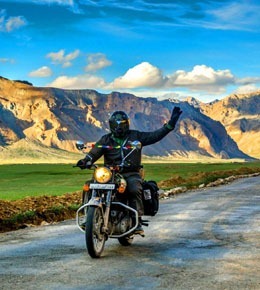Ladakh, often referred to as “The Land of High Passes,” is a mesmerizing region nestled in the northernmost part of India. With its stark landscapes, serene monasteries, and vibrant culture, Ladakh offers an unparalleled experience for travellers seeking both adventure and tranquillity. This guide will take you through the must-see attractions, hidden gems, and practical tips to help you make the most of your Ladakh adventure, with a special mention of the Indiana Zones – unique areas that provide an immersive experience into the heart of Ladakh’s pristine beauty.
Getting There
Ladakh is accessible by air and road. The Leh Kushok Bakula Rimpochee Airport in Leh is the primary gateway, with flights connecting from major cities like Delhi, Mumbai, and Srinagar. For the more adventurous, the Manali-Leh Highway and the Srinagar-Leh Highway offer some of the most scenic drives in the world, albeit only during the summer months when the roads are clear of snow.
Top Attractions
Leh Palace and Shanti Stupa
Start your journey in Leh, the capital of Ladakh. The Leh Palace, a 17th-century former royal palace, offers panoramic views of the town and the surrounding mountains. Just a short drive away is the Shanti Stupa, a Buddhist white-domed stupa that provides breathtaking views, especially during sunrise and sunset.
Pangong Tso
Famed for its changing hues, Pangong Tso is a high-altitude lake situated at 4,350 meters. The journey to Pangong Lake takes you through Chang La, one of the highest motorable passes in the world. Camping by the lake under a starlit sky is an unforgettable experience.
Nubra Valley
Nubra Valley, also known as the “Valley of Flowers,” is accessible via the Khardung La pass, the highest motorable road in the world. The valley is famous for its dunes, double-humped Bactrian camels, and the ancient Diskit Monastery.
Indiana Zones: Hidden Gems
Indiana Zones are specially curated areas in Ladakh that offer a deeper dive into the region’s untouched beauty and cultural richness. These zones provide a mix of adventure, nature, and cultural experiences, ensuring that travellers can experience the essence of Ladakh away from the typical tourist spots.
Zanskar Valley
Part of the Indiana Zones, Zanskar Valley is one of the most remote and stunning regions in Ladakh. Known for its rugged terrain and crystal-clear rivers, Zanskar offers opportunities for trekking, river rafting, and exploring ancient monasteries like Phugtal and Karsha.
Turtuk Village
Located near the Indo-Pak border, Turtuk is a lesser-known gem that falls within the Indiana Zones. This quaint village, with its Balti culture, apricot orchards, and picturesque landscape, provides a unique glimpse into a way of life that has remained largely unchanged for centuries.
Adventure Activities
Trekking
Ladakh is a trekker’s paradise with numerous trails ranging from easy to challenging. Popular treks include the Markha Valley trek, the Chadar trek on the frozen Zanskar River, and the Stok Kangri trek for those seeking high-altitude adventure.
River Rafting
The Zanskar and Indus rivers offer thrilling white-water rafting experiences. The rapids vary in intensity, catering to both beginners and seasoned rafters.
Biking
For motorbike enthusiasts, biking through the rugged terrains of Ladakh, especially the routes through Khardung La and Chang La, is an exhilarating experience.
Cultural Immersion
Monasteries and Festivals
Ladakh is home to several ancient monasteries like Hemis, Thiksey, and Alchi. Plan your visit to coincide with vibrant festivals such as the Hemis Festival, where you can witness traditional masked dances and rituals.
Local Cuisine
Don’t miss out on trying local delicacies like momos, thukpa, and butter tea. Visiting local markets and eateries gives a taste of the region’s culinary heritage.
Practical Tips
Acclimatization
Given Ladakh’s high altitude, acclimatization is crucial. Spend the first couple of days in Leh to adjust to the altitude before venturing to higher regions.
Permits
Certain areas in Ladakh require permits for travel. Ensure you have the necessary Inner Line Permits, especially if you plan to visit restricted areas like Nubra Valley, Pangong Tso, and Tso Moriri.
Best Time to Visit
The best time to visit Ladakh is from May to September when the weather is pleasant, and the roads are accessible. Winters are extremely harsh, with temperatures plummeting well below freezing.


